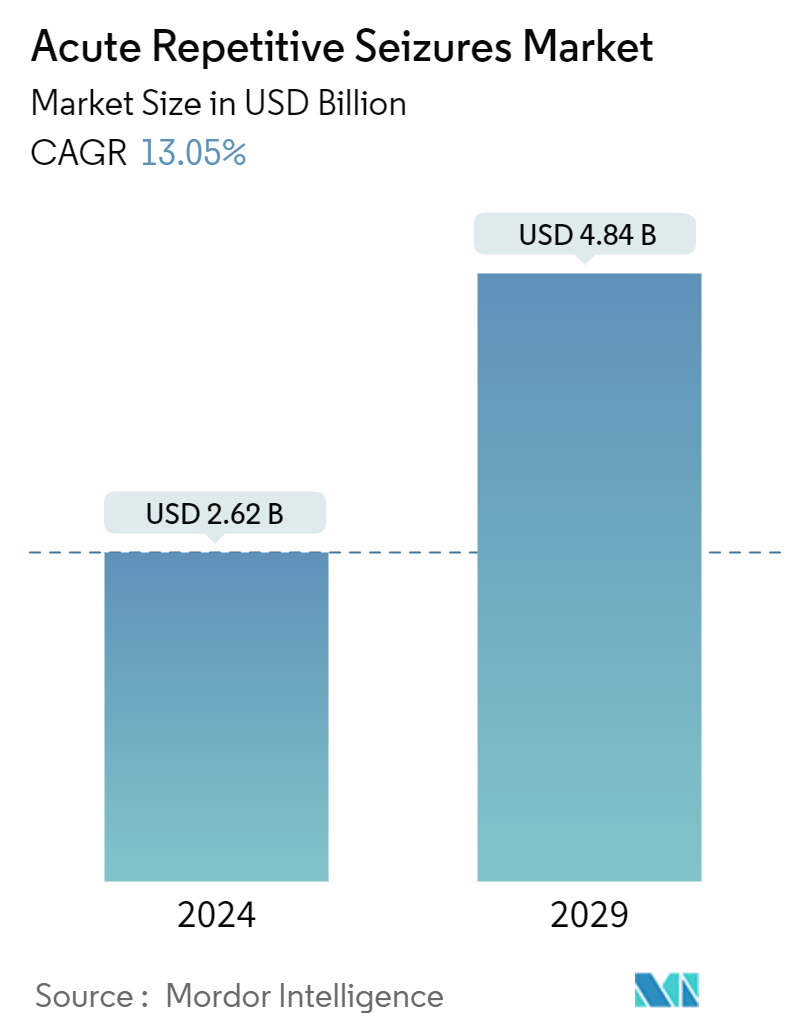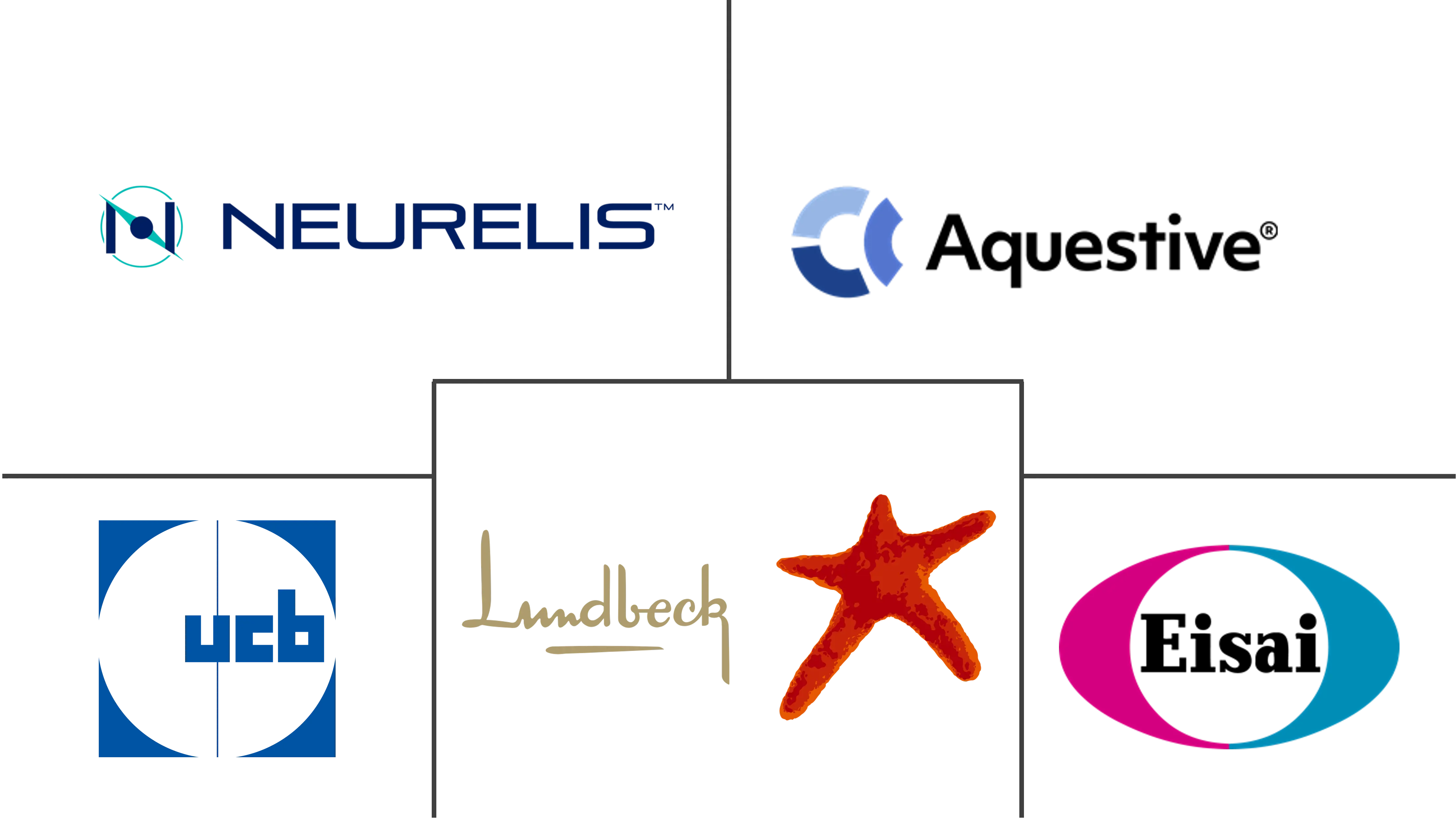Market Size of Acute Repetitive Seizures Industry

| Study Period | 2019 - 2029 |
| Market Size (2024) | USD 2.62 Billion |
| Market Size (2029) | USD 4.84 Billion |
| CAGR (2024 - 2029) | 13.05 % |
| Fastest Growing Market | Asia Pacific |
| Largest Market | North America |
| Market Concentration | Medium |
Major Players
*Disclaimer: Major Players sorted in no particular order |
Acute Repetitive Seizures Market Analysis
The Acute Repetitive Seizures Market size is estimated at USD 2.62 billion in 2024, and is expected to reach USD 4.84 billion by 2029, at a CAGR of 13.05% during the forecast period (2024-2029).
Factors such as the rising burden of seizures, coupled with a growing aging population and increasing research and development activities, are expected to boost the growth of the acute repetitive seizures market over the forecast period.
As the prevalence of epilepsy and other seizure disorders rises, the demand for effective treatments intensifies. This surge can be attributed to factors such as genetic predisposition, head injuries, and various neurological conditions. For instance, data released by the World Health Organization in February 2024 indicated that approximately 5 million individuals were diagnosed with epilepsy annually on a global scale. Furthermore, data from the World Health Organization in February 2023 highlighted that around 50 million people worldwide were living with epilepsy, solidifying its status as one of the most prevalent neurological disorders. The same source noted that a significant 80% of those affected resided in low- and middle-income countries. Moreover, individuals with epilepsy tend to have a lower seizure threshold, rendering them more vulnerable to acute repetitive seizures, particularly when triggered by factors like stress or sleep deprivation. Thus, the high burden of acute repetitive seizures is expected to bolster the demand for effective drugs, propelling market growth.
Similarly, a study published in Neurology and Therapy in July 2024 examined the burden of seizures in prehospital settings, focusing on incidence and hospital admission rates. The study found that over the previous two years, Germany had recorded 6,534 suspected seizure-related emergency cases, with a significant proportion resulting in hospital admissions. Consequently, the rising number of individuals experiencing seizures underscores the heightened demand for effective acute treatments, a trend anticipated to propel market growth during the forecast period.
Furthermore, hospital initiatives, such as awareness programs focused on mental health and neurological care, are driving research and development in acute repetitive seizure management, thereby fueling market growth. For instance, in March 2023, Aster Prime Hospitals in Hyderabad, India, partnered with the Walkers Association of Krishna Kant Park to host an awareness program on epilepsy for Purple Day. The program sought to elucidate epilepsy symptoms and their effective treatments. These initiatives are poised to heighten the demand for epilepsy diagnoses, subsequently increasing the need for effective medication, thereby accelerating market growth during the forecast period.
Moreover, increased efforts by companies to develop new drugs for treating seizure clusters are poised to drive market growth in the coming years. For instance, in April 2024, Neurelis Inc. showcased a poster on VALTOCO (a diazepam nasal spray) targeting frequent seizure episodes or seizure clusters in epilepsy patients aged from 6 to 65. The poster highlighted the time to treatment across various subpopulations. Such initiatives underscore the company's dedication to enhancing outcomes for epilepsy patients, suggesting a positive trajectory for market growth.
Therefore, owing to the rising burden of epilepsy leading to the high risk of experiencing acute repetitive seizures and increasing company activities, the market studied is expected to grow over the forecast period. However, the high cost of treatment and side effects associated with the drugs are likely to impede market growth over the forecast period.

